
Business as usual for Dr. Morgan Brosnihan, and her golden pup. Photo: Arrowhead
Editor’s Note: This feature is presented by our partners at Arrowhead Water.
Preparing for a thru hike can be a daunting task. There are often many layers of planning (both financial and life) that can feel overwhelming and time consuming, leading up to being off work and hiking for six months.
Your best trip insurance is physically preparing for your hike. There’s no doubt that on any internet thread, someone will say, “You can’t train for this; you just have to get out there and hike,” or “Hiking is the only way to prepare for hiking.” While the latter has some merit, not training at all is a quick way to be on a flight home earlier than planned.
Training doesn’t have to be complicated, and it doesn’t have to take much time to be effective. When it comes to trail-ending injuries, fractures, tears, and significant tendinitis are the main culprits.
Training can significantly reduce your risk of these injuries. Your body adapts to the stress put on it when done in a gradual, progressive manner. But when you start a thru hike without training, there is no gradual, progressive manner.
Instead, it’s a sudden spike in load, and a sudden spike is more likely to cause a stress reaction or injury. Building strength and bone density is your best armor against these potential trail-ending injuries. You want to be as resilient as possible to manage the stress of walking all day, every day.
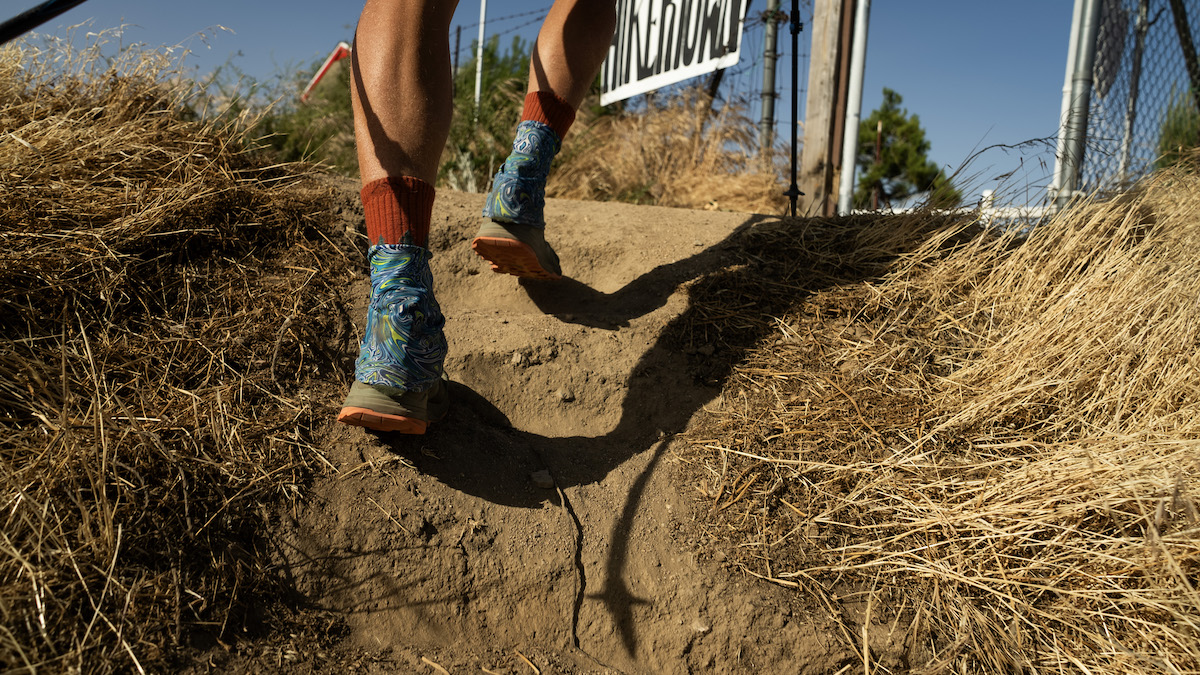
Hiking over 2,650 miles puts a lot of strain on your feet and ankles. Photo: Arrowhead
How to Start Training for the Pacific Crest Trail
So, now that you know you need to train, where do you start?
1.) At least 1-2 hours per week with your pack on. Even if you walk around your house or neighborhood. Get your body under your pack load to start adjusting pack fit and getting stronger.
2.) Aim for at least 10,000 steps per day; if you already get that, then aim to increase your daily steps by 2-5k.
3.) Hike if you can. Hiking is excellent training for a thru-hike, but some live in flat states or winter wonderlands before a thru-hike. If you can’t get out on many hikes, you will be okay, but the importance of other cardio will be a higher priority.
4.) Past injury is the best predictor of future injury. For example, if you know you suffer from ankle sprains, you may need to intensify your focus on ankle and hip strength.
5.) Weight train. If you’re brand new to it, don’t be afraid to seek guidance. If you’ve never done it, chances are you can stick with the basics before worrying about whether it’s the best possible selection of exercises relative to thru hiking.
If you’re comfortable with weight training, here is a simple way to prioritize your workouts
- Pick a movement that fits each category: push, pull, hinge, squat, carry, step.
- Add movements to each workout to focus on injury prone muscles.
- Prioritize single-leg variations to challenge stabilizing muscles.
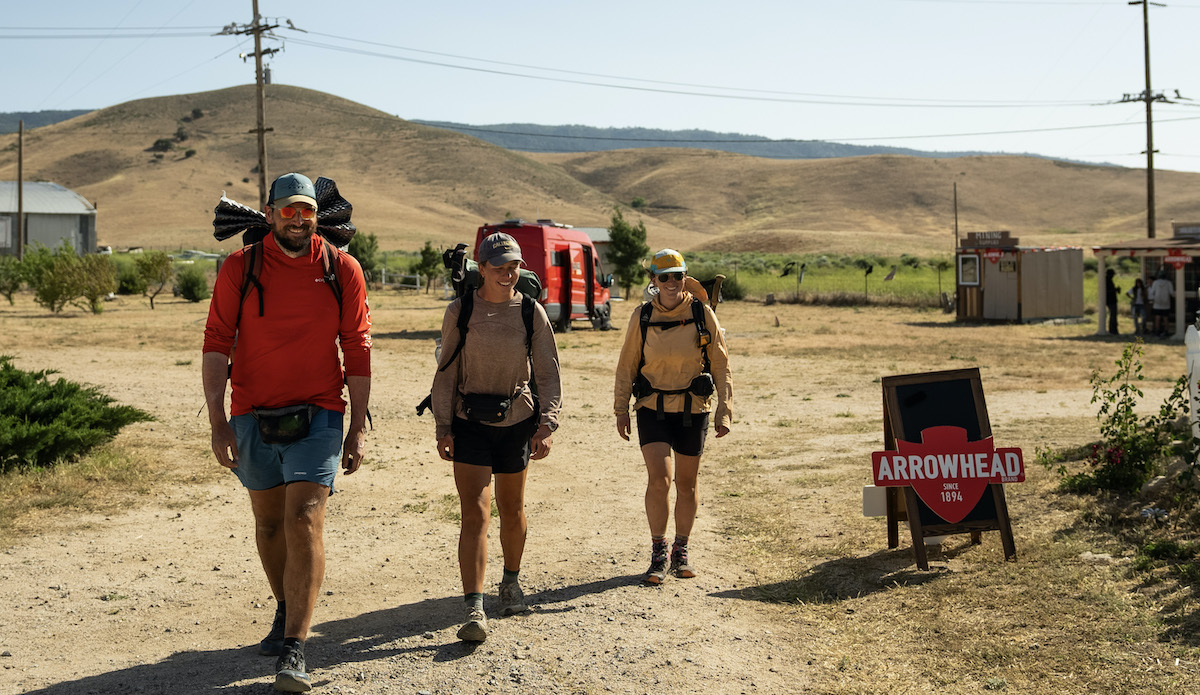
Full of smiles, PCT hikers walk into Hikertown at Mile 517. Photo: Arrowhead
Shoes, Shoes, Shoes — Did We Mention Shoes?
Footwear is arguably the most critical piece of gear. It would help to test your shoes with a fully loaded pack in various terrain (incline, decline, flat) to ensure they work for you.
Footwear Tips for Hiking the PCT
1.) Don’t buy your shoes ahead unless you have thru hiked before, and know that these shoes, without a doubt, work for you. Even the best sale won’t offset the blow of $1,000 worth of shoes that no longer fit in your living room. This also often leads to hikers committing to shoes that no longer meet their needs.
2.) If you have flat feet, avoid high, rigid-arch insoles. The common thought is, “I need to give myself an arch.” This mainly works with kids, but not so much with adults walking 30 miles daily with a heavy pack on. If you’re concerned about your flat feet, it’s best to see a physical therapist to work on strength and get proper footwear.
3.) Figure out if you over-pronate. Most running stores can watch you walk and tell you if that’s the case, but if you look up videos of it and video yourself walking, you can likely also tell. Mild cases are tricky, but significant cases are easy to identify if you know what they look like. You will likely want to avoid popular shoes like Altra Lone Peaks if you over-pronate, as they are flexible and quickly break down in as few as 20 miles to warp the shoe’s shape so it leans inward.
Typically, you want something with some heel drop (the heel height compared to the toe) and something more rigid (when you try to twist it, it should be more difficult to twist). These common shoe mistakes are a significant factor in injuries I see in the first 100 miles, and starting with the wrong footwear can get expensive quickly.
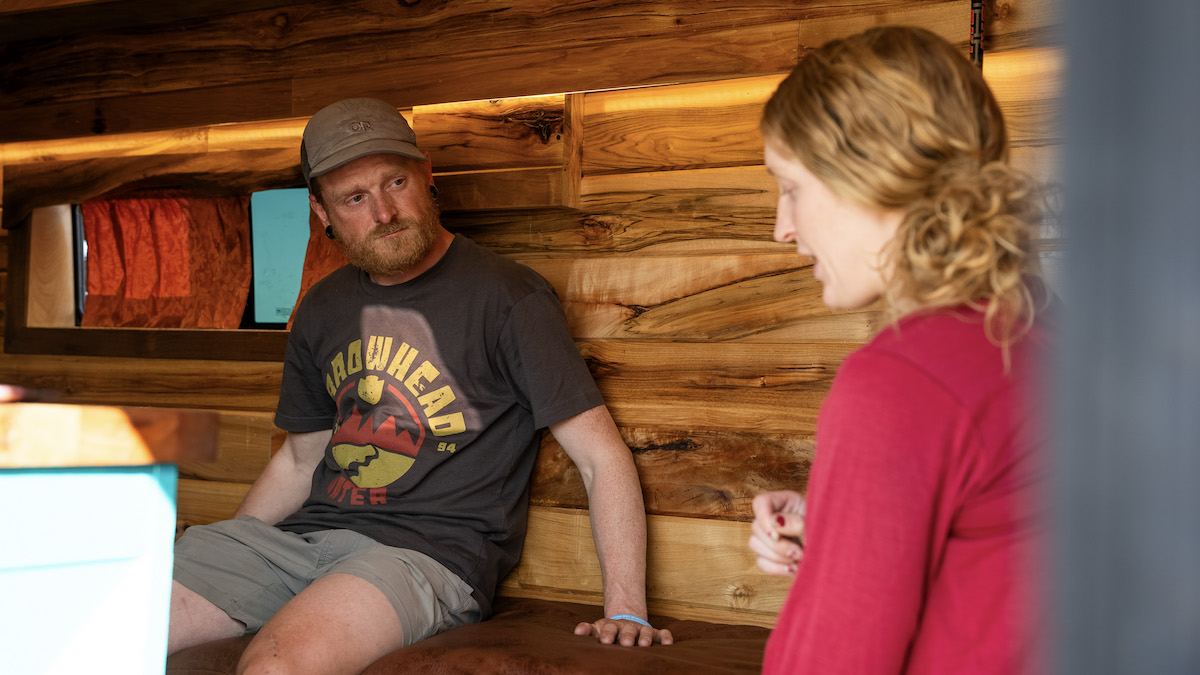
Dr. Morgan helps a client just 20 percent of the way through his hike. Photo: Arrowhead
Pack Tips For Hiking the PCT
If your base weight (the weight of your gear minus food and water) is over 12 pounds, you should consider a pack with a frame, load lifters, and a hip belt. The ultralight packs without some of these features can be great, but where I see them causing shoulder or back pain is typically with too heavy of a base weight in a pack that is not designed for that much load.
It’s okay if your base weight is higher. Getting the pack weight down takes a lot of time, money, and experience, and ultralight setups are just not accessible to everyone. You can be successful with a heavier pack, but you must choose an appropriate pack for your weight to avoid shoulder and back issues. That’s not to say you won’t have a bad time if your pack is over 50 pounds, but if you can get your base weight under 20 pounds and keep working at it as you hike, you’ll be just fine if you’ve trained your body to be ready for the load.
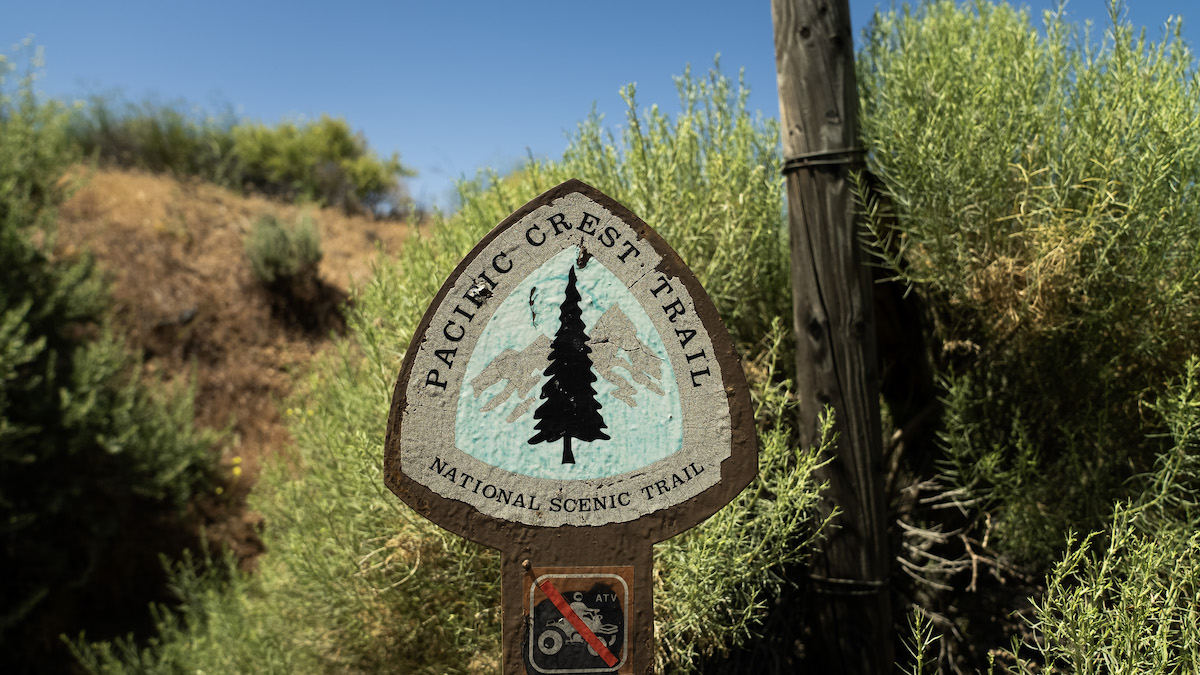
A trail sign on the PCT marks the way. Photo: Arrowhead
AT vs CDT vs PCT
Something interesting I have learned, having followed thru-hikers for three years now, is that different aspects of terrain lead to different injury trends. Using the Triple Crown trails as an example, here are the two most common injuries, in my experience, on each trail and why that might be.
Appalachian Trail
Knee pain and achilles tendinitis. Simply put, this trail is straight up and straight down with some rock scrambling added in. That type of terrain demands more strength in our legs through a larger range of motion. Exercises like deep squats and toe-elevated heel raises are great preparation to avoid these issues.
Continental Divide Trail
Plantar fasciitis and hip flexor tendonitis are two common ailments on the CDT. The CDT is known for its long road walks and extensive mountain ranges. The CDT can be tricky in finding the proper footwear, as what works for you on most hikes also has to work on the road walk. Sometimes, a shoe with more of a rockered bottom or a thicker cushion will do the trick if road walks are an issue for you. The hip flexor tendinitis is primarily caused by over-striding (a common injury precursor), and the Gila River section/road walks can also trigger the hip flexor to overwork.
Pacific Crest Trail
This is the trail I know best, so it’s hard to only pick two. Anterior tibialis and posterior tibialis tendinitis are the ones I treat the most in any given season. These muscles are both responsible for lifting your arch, and the anterior tib helps decelerate your foot as it slaps the ground, taking a step.
The PCT is notoriously side-sloped as it wraps around the mountains, which puts these muscles to the test. Then, the grade of the PCT and relatively non-rocky terrain lend to overstriding, like riding your brakes downhill in a car. In this case, the brakes are the anterior tibialis, which can flare up after these 20-plus-mile downhill sections. I have an entire e-book about the first 800 miles and common injuries per section related to terrain/water carries/replacing shoes.
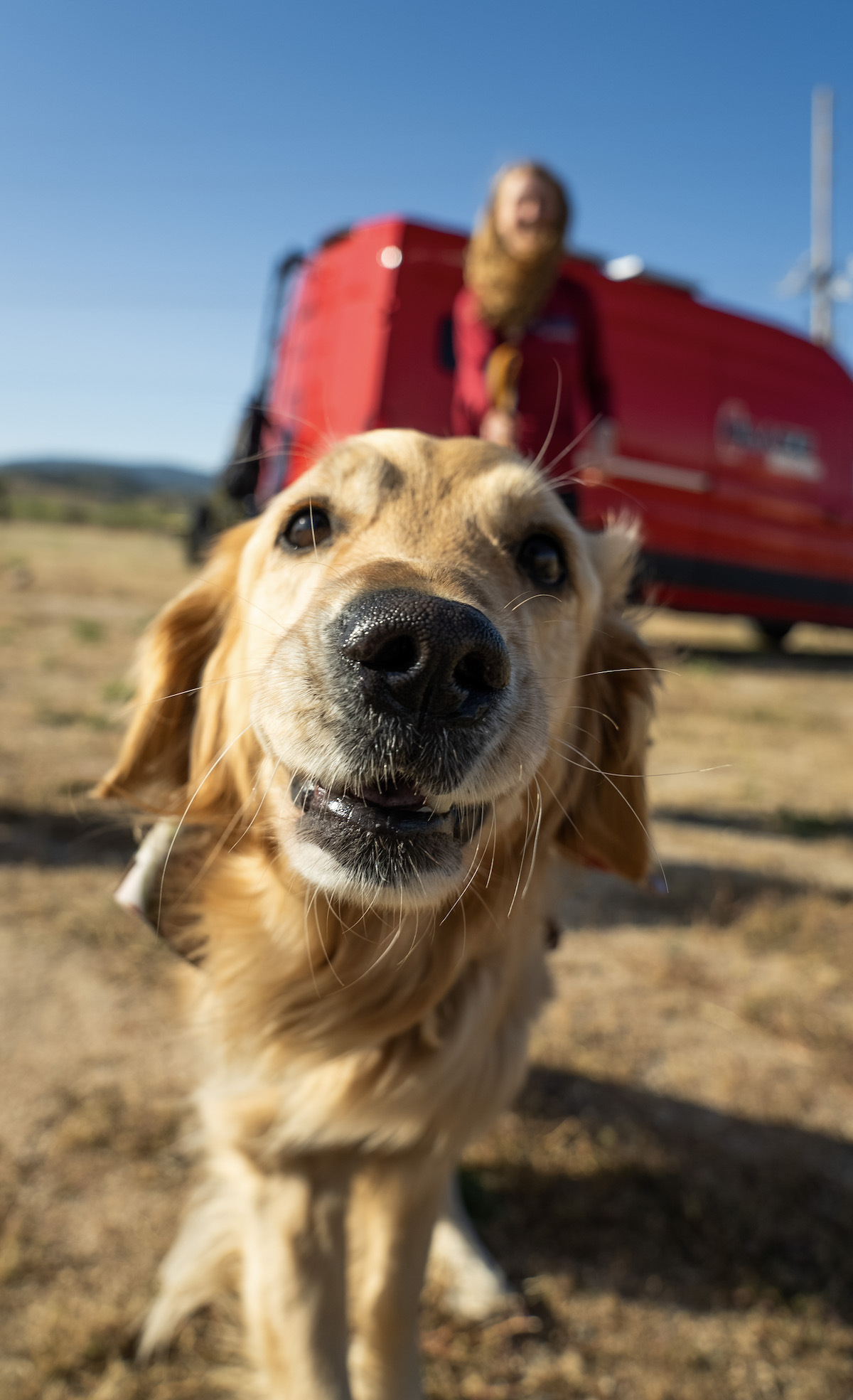
Morgan’s Golden Retriever offers emotional support to hikers. Photo: Arrowhead
In summary, preparing for a thru hike involves not only physical training but also careful consideration of footwear and pack selection. Training with a weighted pack, increasing daily steps, incorporating hiking and weight training, and focusing on strengthening injury-prone areas are essential for a successful thru hike.
Additionally, understanding footwear needs, especially for individuals with flat feet or over-pronation, and ensuring proper pack features for the weight of gear are crucial elements to consider. By prioritizing these aspects, hikers can mitigate the risk of injuries and discomfort, ultimately enhancing their thru-hiking experience.

